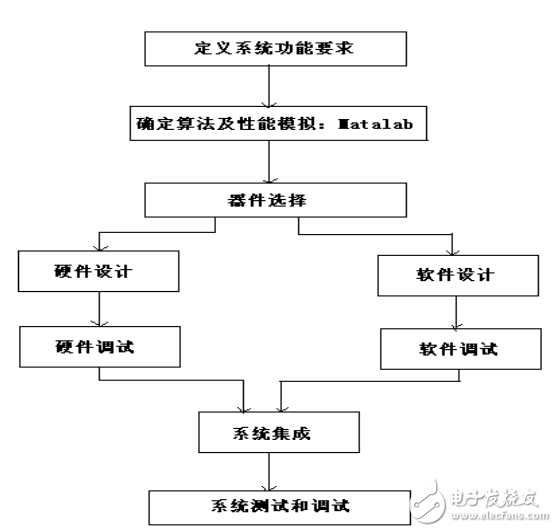There are many DSP products on the market, there are more than 200 fixed-point DSPs, and more than 100 floating-point DSPs. Main production: TI, AD, Lucent, Motorola and LSI Logic. Leading products: TI's TMS320C54xx (16bit fixed point), TMS320C55xx (16bit fixed point), TMS320C62xx (32bit fixed point), TMS320C67xx (16bit floating point), Motorola's DSP68000 series. What do we need to pay attention to when selecting DSP?
1, DSP chip overview
16bit fixed-point DSP: first represented by TMS320C10/C2X, now represented by TM320C2XX/C54XX.
32 bit floating point DSP: on behalf of the product ADSP21020, TMS320C3X
Representative products of general-purpose DSP chips include TI's TMS320 series, AD's ADSP21xx series, MOTOROLA's DSP56xx series and DSP96xx series, AT&T's DSP16/16A and DSP32/32C monolithic devices.
TI's three main DSP product lines are the C2000 series for digital control systems; the C5000 (C54x, C55x) series is mainly for low-power, portable wireless communication terminal products; the C6000 series is mainly used for high-performance complex communication systems. . The TMS320C54x family of DSP chips in the C5000 series is widely used in communications and personal consumer electronics.
In the design process of the DSP system, it is very important to select the appropriate device. After determining the system function requirements, through the advanced algorithm determination and performance simulation, we must select the most cost-effective device to facilitate the next development.

DSP system design flow chart
2, DSP chip selection method
In general, fixed-point DSP chips are cheaper and consume less power, but have lower computational accuracy. The advantage of the floating-point DSP chip is that the operation precision is high, and the C language programming and debugging is convenient, but the price is slightly expensive and the power consumption is also large. For example, TI's TMS320C2XX/C54X series are fixed-point DSP chips, and its low power consumption and low cost are its main features. The TMS320C3X/C4X/C67X is a floating-point DSP chip with high operational precision, convenient programming in C language, short development cycle, but at the same time its price and power consumption are relatively high.
The amount of computation of the DSP application system is the basis for determining which DSP chip is used. A small amount of computation can use a DSP chip that is not very powerful, which can reduce system cost. On the contrary, a DSP system with a large amount of computation must use a DSP chip with strong processing power. If the processing capability of the DSP chip does not meet the system requirements, it must be processed in parallel by multiple DSP chips. So how do you determine the amount of DSP system computation to choose a DSP chip? Let us consider two situations below.
1. Processing by sample
The so-called sample point processing is that the DSP algorithm cycles through each input sample once. This is the case with digital filtering. In a digital filter, it is usually necessary to calculate each input sample once. For example, a 256-tap adaptive FIR filter using the LMS algorithm assumes that each tap requires 3 MAC cycles, and the 256 tap calculation requires 256 x 3 = 768 MAC cycles. If the sampling frequency is 8 kHz, that is, the interval between samples is 125 ms, and the MAC period of the DSP chip is 200 ns, then 768 MAC cycles require 153.6 ms, which obviously cannot be processed in real time, and a higher speed DSP chip needs to be selected. Table 1.3 shows the processing requirements for the three DSP chips for the two signal bandwidths. The MAC cycles for the three DSP chips are 200ns, 50ns, and 25ns, respectively. As can be seen from the table, the application of the dialogue band, the latter two DSP chips can be realized in real time, for audio applications, only the third DSP chip can be processed in real time. Of course, in this example, no other calculations are considered.
2. Frame processing
Some digital signal processing algorithms do not cycle through each input sample, but instead cycle every certain time interval (often called a frame). For example, a medium- and low-speed speech coding algorithm usually takes one frame of 10 ms or 20 ms, and cycles through the speech coding algorithm every 10 ms or 20 ms. Therefore, when selecting a DSP chip, the processing power of the DSP chip within one frame and the calculation amount of the DSP algorithm should be compared. Assuming that the instruction cycle of the DSP chip is p(ns) and the time of one frame is Dt (ns), the maximum amount of computation that the DSP chip can provide in one frame is Dt/p instructions. For example, the instruction cycle of the TMS320LC549-80 is 12.5 ns, and the frame length is 20 ms. The maximum computational amount that the TMS320LC549-80 can provide in one frame is 1.6 million instructions. Therefore, as long as the speech coding algorithm does not exceed 1.6 million instructions, it can be run in real time on the TMS320LC549-80.
3. What do we need to pay attention to when selecting the DSP chip?
(1) Speed ​​indicator:
The most basic speed specifications of DSP are MIPS (million instructions per second) and MFLOPS (million floating-point operations per second), as well as the speed of FFT and FIR filters and the speed of special operations such as division and square root.
(2) Input and output bandwidth
When the computing speed meets the requirements, it is also necessary to consider whether the speed of the DSP input/output data is fast enough.
(3) Accuracy and dynamic range: The accuracy and dynamic range are determined by the data word width of the DSP and the fixed-point/floating point data format.
(4) Specific functions: If the DSP is integrated with a variety of power-on loading functions, synchronous/asynchronous serial ports, A/D, D/A, on-chip voice processing functions, codec, etc., it can be easily designed and reduced in cost.
(5) On-chip memory
DSP on-chip memory can be used to put programs and data. When programs and data are placed on-chip, the DSP runs much faster, so the more on-chip memory, the better.
(6) DSP development tools
When choosing a DSP chip, you must pay attention to the support of its development tools, including hardware and software.
(7) Power consumption issues and hardware packaging issues
(8) Cost issue
Fixed-point DSPs are cheaper, have lower power consumption, but have lower computational accuracy.
Floating-point DSP is slightly more expensive, higher power consumption, but high precision of operation, C language programming and debugging is convenient.

Women'S Long Wallet,Pvc Women'S Purse,Long Layered Wallet,Pu Women'S Purse
Dongguan City Diadia Industry Co.,Ltd , https://www.diadiabag.com
